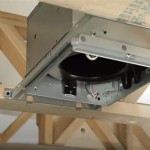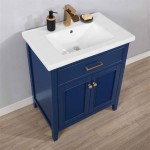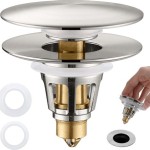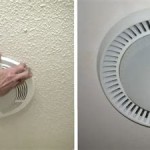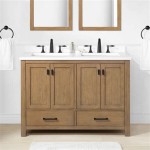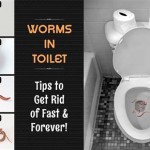```html
Understanding Bathroom Sink Water Lines
Bathroom sink water lines are a crucial element of any plumbing system, responsible for delivering both hot and cold water to the faucet. Understanding their components, installation, maintenance, and potential problems is essential for both homeowners and plumbing professionals. A properly functioning water line system ensures a reliable water supply for daily hygiene and prevents potential water damage caused by leaks or malfunctions.
This article will delve into the intricacies of bathroom sink water lines, covering the different types of pipes used, the connection points, potential problems, and basic troubleshooting methods. It will also address relevant safety considerations when working with plumbing. The information presented aims to provide a comprehensive overview suitable for individuals seeking to understand the plumbing beneath their bathroom sink.
Types of Pipes Used for Bathroom Sink Water Lines
Several types of pipes are commonly used for bathroom sink water lines, each with its own advantages and disadvantages. The choice of pipe material often depends on factors such as cost, durability, ease of installation, and local building codes. Understanding the characteristics of each material allows for informed decisions when installing or replacing water lines.
Copper Pipes: Copper pipes have been a traditional choice for plumbing systems for many years. They are known for their durability, resistance to corrosion (though this can vary depending on water chemistry), and ability to withstand high water pressures. There are two main types of copper pipes used for water lines: Type L and Type M. Type L copper is thicker and more durable than Type M, making it suitable for underground installations and areas with high water pressure. Type M copper is thinner and generally used for residential plumbing systems above ground. Copper pipes are typically joined together using soldering or compression fittings, requiring specialized tools and skills.
PEX Pipes: Cross-linked polyethylene (PEX) pipes have gained popularity in recent years due to their flexibility, ease of installation, and resistance to freezing. PEX pipes are made from a type of plastic that is cross-linked, making it more durable and resistant to high temperatures and pressures compared to standard polyethylene. PEX pipes can be easily bent and routed around obstacles, reducing the need for multiple fittings. They are typically joined together using crimp rings, expansion fittings, or push-fit fittings, making the installation process relatively simple. PEX is generally considered a cost-effective and reliable option for bathroom sink water lines.
CPVC Pipes: Chlorinated polyvinyl chloride (CPVC) pipes are another type of plastic pipe that is commonly used for hot and cold water distribution. CPVC pipes are similar to PVC pipes but are specifically designed to withstand higher temperatures, making them suitable for hot water lines. CPVC pipes are rigid and typically joined together using solvent cement. They are relatively inexpensive and easy to install, but they can be more brittle than PEX pipes and may be more susceptible to cracking in cold temperatures.
Flexible Supply Lines: Flexible supply lines, often made of braided stainless steel or chrome-plated copper, are used to connect the water shut-off valves to the faucet tailpieces. These lines provide flexibility and allow for easy connection, especially in tight spaces. Flexible supply lines are available in various lengths and connection sizes. It's important to choose the correct size and type of supply line to ensure a secure and leak-free connection.
Key Connection Points and Components of Bathroom Sink Water Lines
A bathroom sink water line system consists of several key connection points and components that work together to deliver water to the faucet. Understanding these components and their functions is essential for troubleshooting problems and performing repairs. The system typically starts at the main water supply and ends at the faucet fixture.
Main Water Shut-Off Valve: The main water shut-off valve controls the water supply to the entire house. It is typically located near the water meter or where the water supply enters the building. Knowing the location of the main water shut-off valve is crucial in case of a plumbing emergency, as it allows homeowners to quickly shut off the water supply to prevent further damage.
Branch Water Lines: Branch water lines are pipes that branch off from the main water line and supply water to individual fixtures, such as bathroom sinks, toilets, and showers. These lines are typically smaller in diameter than the main water line.
Shut-Off Valves (Angle Stops): Shut-off valves, also known as angle stops, are located under the bathroom sink and control the water supply to the faucet. There are typically two shut-off valves, one for hot water and one for cold water. Shut-off valves allow homeowners to isolate the water supply to the sink for repairs or maintenance without shutting off the water to the entire house. These valves commonly use a compression fitting to connect to the water supply pipe and a threaded connection to connect to the flexible supply line.
Flexible Supply Lines (Risers): Flexible supply lines connect the shut-off valves to the faucet tailpieces. They are typically made of braided stainless steel or chrome-plated copper and provide flexibility for easy connection. The length of the flexible supply line should be sufficient to allow for movement of the faucet without straining the connection.
Faucet Tailpieces: Faucet tailpieces are the threaded pipes that extend from the bottom of the faucet body. They connect to the flexible supply lines using threaded fittings and washers. The tailpieces are typically made of brass or stainless steel. Proper tightening of the connection between the flexible supply line and the tailpiece is essential to prevent leaks.
P-Trap: While not directly part of the water *supply* line, the P-trap is a critical component of the drain line located beneath the sink. It is a U-shaped pipe that traps water, preventing sewer gases from entering the bathroom. The P-trap is connected to the sink drain and the drainpipe in the wall.
Common Problems and Basic Troubleshooting
Bathroom sink water lines are susceptible to various problems, including leaks, low water pressure, and noisy pipes. Understanding the common causes of these problems and how to troubleshoot them can save homeowners time and money on plumbing repairs. Addressing these issues promptly can also prevent more significant water damage.
Leaks: Leaks are one of the most common problems associated with bathroom sink water lines. Leaks can occur at various connection points, such as the shut-off valves, flexible supply lines, and faucet tailpieces. Common causes of leaks include loose fittings, corroded pipes, and damaged washers or O-rings. To troubleshoot a leak, start by identifying the source of the leak. Tighten any loose fittings, and replace any damaged washers or O-rings. If the pipe is corroded, it may need to be replaced. Dripping faucets can often be attributed to faulty cartridges or valve seats, which can be replaced with the appropriate repair kit.
Low Water Pressure: Low water pressure can be caused by several factors, including clogged pipes, a malfunctioning pressure regulator, or a partially closed shut-off valve. To troubleshoot low water pressure, start by checking the shut-off valves under the sink to ensure that they are fully open. If the shut-off valves are open, check the aerator on the faucet for any debris or mineral buildup. Cleaning the aerator can often improve water pressure. If the problem persists, the pipes may be clogged with sediment or mineral deposits, requiring professional cleaning or replacement.
Noisy Pipes (Water Hammer): Noisy pipes, often referred to as water hammer, can be caused by sudden changes in water pressure. When a faucet is turned off quickly, the water flow stops abruptly, creating a pressure surge that can cause the pipes to bang or vibrate. To address water hammer, install water hammer arrestors near the faucet or other fixtures that cause the noise. Water hammer arrestors are devices that absorb the pressure surge and prevent the pipes from banging. Securing loose pipes can also help reduce noise.
Frozen Pipes: In cold climates, water pipes can freeze and burst, causing significant water damage. To prevent frozen pipes, insulate the pipes in unheated areas, such as basements and crawl spaces. During periods of extreme cold, leave the faucet slightly open to allow a slow drip of water to flow through the pipes, which helps prevent them from freezing. If pipes do freeze, thaw them slowly with a hair dryer or by wrapping them with warm towels. Never use an open flame to thaw frozen pipes.
Clogged Pipes: Over time, pipes can become clogged with hair, soap scum, and other debris, leading to slow drainage or backups. To prevent clogged pipes, avoid pouring grease or oil down the drain. Regularly flush the pipes with hot water and baking soda to help dissolve any buildup. If the drain is already clogged, use a plunger or drain snake to remove the blockage. Avoid using harsh chemical drain cleaners, as they can damage the pipes.
Safety Considerations: When working with bathroom sink water lines, it is essential to take proper safety precautions. Always turn off the water supply to the sink before performing any repairs or maintenance. Wear safety glasses to protect your eyes from debris. Use appropriate tools for the job, and follow the manufacturer's instructions for any plumbing products. If you are uncomfortable performing plumbing repairs, it is best to hire a qualified plumbing professional.
```
Water Supply Lines For Bathroom Sink Http Www Designbabylon Interiors Com Bathro Shower Plumbing Diagram

Hurds 10 5 12 In 2024 Bathroom Sink Plumbing Pex Tubing

Bathroom Sink Pex Water Line Stub Out Drain Photo Master Bath Shower

Premium Photo Water Pipes Connected To Valve Of Sink In Bathroom

Pin By Janet Miller On Cabin 2024 Plumbing Rough In Bathroom Sink Drains

Pullout Faucet Fix Tip From The Family Handyman

Replace Bathroom Sink Water Supply Lines

Do You Have A Leaking Bathroom Sink Learn About The Possible Causes Water Line Repair In Lake Worth Tx Benjamin Franklin Plumbing
Moving Sink Water Supply And Drain

Replace Bathroom Sink Water Supply Lines
Related Posts


